Evolution as a guide for future crop breeding and design LECTURE 3
1/49
There's no tags or description
Looks like no tags are added yet.
Name | Mastery | Learn | Test | Matching | Spaced |
|---|
No study sessions yet.
50 Terms
Four components to the concept of Food security
Food availability
enough nutritous food of sufficent quality needs to be available to people for consumptin
Food access
individuals and households must be able to acquire sufficient food to be able to eat
healthy, nutritous diet or have access to sufficient resources needed to grow their own food
Food utilisation
people must have access to sufficient quantity and diversity of food to meet nutritional needs
but must also be able to eat and properly metabolise such food
Stability
food may be available and accessible and in order for people not to feel insecure
state of affairs needs to be enduring rather than temporary or subject to fluctuations
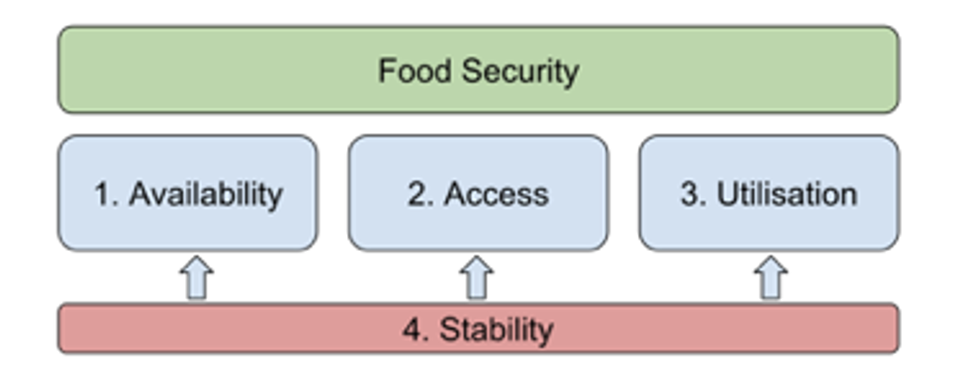
I.e ascpetrs of food secuity
Is there food
Can it be accessed
Is it good/digestible
Is it sustainable
Threat to food security
→ by 2030
33% pop rise
30% demand on water
food and energy up 50%
Why is this threat happening?
pop size increase
increase wealth
reduction in imporvement in crop yield
impact of climate change on land availability
conflicts demanding land aside for
biofuels or
maintain biodiversity and store carbon
Why does more wealth increase demand for food?
increase flexibility of income
use of meat as primary foodstuff increases
creates additional difficulty for global food supply
Why does meat production increase food supply difficulty
conversion of plant calories to animal→ 10% efficiency
meat demand = x10 fold increase demand on crop production
e.g 1/3 of world total cereal production= animal feed
therefore, as meat demands increase, more demand on cereals
Crops amounting to 2/3 os calories consumed by global population
maize
rice
wheat
soybean
To ensure they feed enough people
yield increases 2 in last 50 years
How?
agronomic improvements
technological improvements
intensive breeding
→ optimise yield within genetic limits of each species
Why are yield increases slowing down?
natural variation within key crop species
largely been exploited
Availability of land
→ this is not good for the predicted increases in demand
calorie demand from crops with x2 in the next 30-35 years
Example of this→ rice yield yield increase slow down
increase 42% in 1980s
but only by
6% between 2000 and 2010
Land availability
Limited by:
soil type
elevation
climate
But also other factors!:
acidification/ desertification of land (due to intense agriculture)
increased urbanisation
biofuels e.g in USA
increased pressure tokeep global diversity/carbon stores
Climate change→ IMPACTS all of these
Many of the solutions of these relies on
Plant science
Genetic bottle neck
rapid reduction in effective size of a population
may occur through a variety of causes
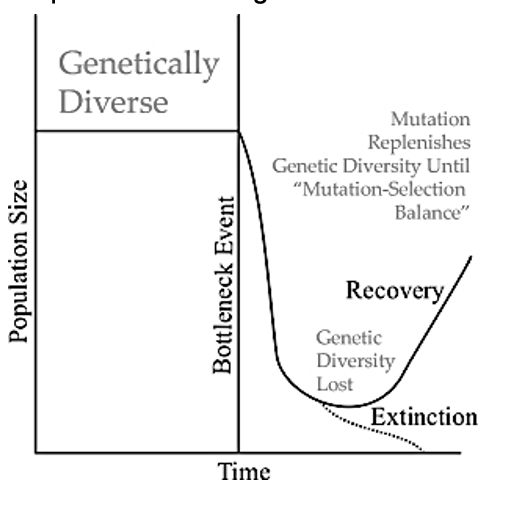
What do bottle necks do to gene pool
reduce the variation
→ less genetic diversity is present to pass onto future generations
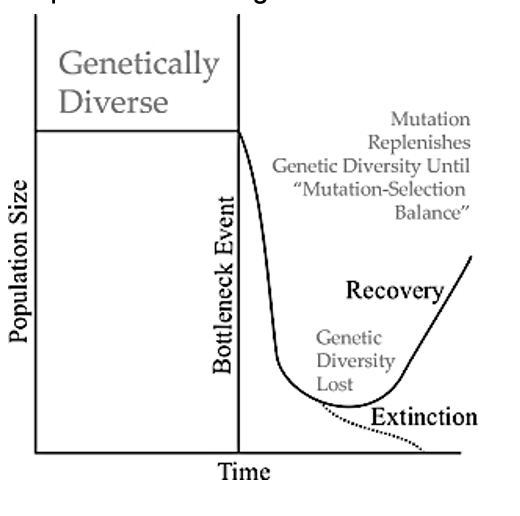
What does this loss of genetic diversity lead to
overall reduced robustness in the population:
impairing its ability to survive new challenges with adaptation
e.g cannot adapt well to climate change
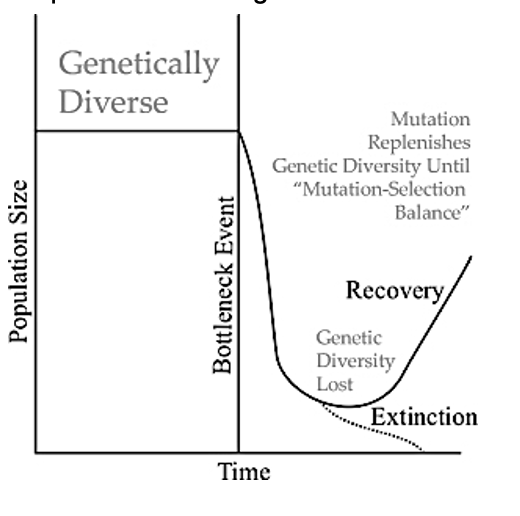
How can genetic diversity increase again?
gene flow from another population
genetic diversity slowly accumulate again as random evolve in the surviving population
until mutation-selection balance is reached
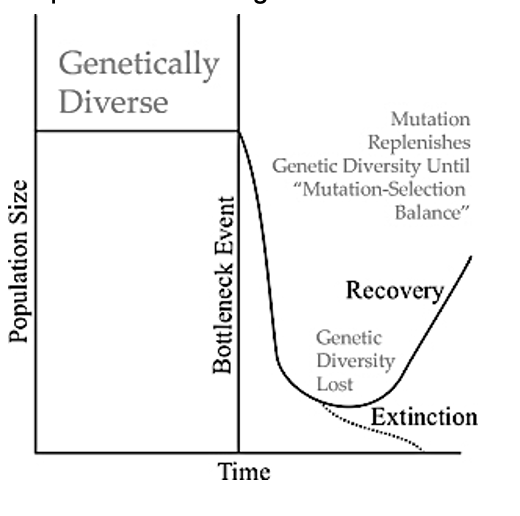
When do bottle necks occur
small group is reproductively isolated from a main population
e.g Founder effect→ paritularly relevent for domestication process
where founder evenets can occur at a number of different stages
Domestication Bottleneck
limited part of species diversity is selected for
cultivated crop likely has limited diversity compared with wild species from which it originates
After this initial bottle neck
Diversity may increase
How?
unconscious or conscious selection in different local ecological situations
introgression from wild populations
What can happen next?
Second potential bottleneck
‘dispersal’ bottleneck:
Why?
When crops introduced outside their centre of domestication
where smaller diversity of domesticated crop is used as the genetic basis for the new location
Ultimate effect of prolonged selection (over 1000s of years)
Reduced allelic diversity
limited genetic pool
→ hard to work with to get new pest and disease resistance traits

How can low gene pool be helped?
Using crop wild relatives/ ancestral progenitors
Importance of ancestral progenitors and other crop wild relatives
the traits of the modern crop species can only really be understood by comparison with the progenitor species
the inter-fertility of the ancestral progenistor species and drevived crop species can enable tools to resolve the genetic basis of domestication
BUT ALSO USEFUL FOR:
identifying the evo ancestors of crop species
→ relating to the issue of genetic bottlenecks and allelic diversity
Definition of crop wild relatives
wild plant taxon that has an indirect use derived from its relatively close genetic relationship to a crop
As they have not been domesticated
Represent a vast reservoir of ‘lost’ genetic diversity:
genes for resistance to high temps, drought, pests, disease
taste, nutrition and yield
Therefore…
Use in introgression with crop species is common
E.g s of introgression
Oryza nivara wild rice cross with Oryza sativa subcp
→ strong and extensive resistance to a pathogen grassy stunt virus
Tomato cultivars cross with the wild
→ disease resistances

What is critical before doing introgression?
determining the closest relatives
However there is a problem with using wild crop relatives!
they may have gone extinct!
→ 40-50% of all CWR are threatnend with extinction
Key threats to the crop wild relatives
land-use change
climate change
→ likely 31/50 in S.Amereica of Archis likely to go extinct
nitrogen deposition
invasive species
How are they managed?
identify their distribution in wild
identify potential risk of extinction
→ inform seed banking strategies
ex-situe conservation
Why is it an issue to be polyploid?
e.g Cavendish banana= triploid
→ but low genetic diversity for pest etc
Introgession?
progenitor speceis is diploid
→ introgression= sterile triploids
How to get around this issue?
Resynthesise polyploids e.g with wheat
go back in evo time
re-create the polyploid with the original progenitors
Makes a sterile triploid progeny but then
treat with chemicals (cochicine)→
Artificially induce chromosomal doubling
→ synthetic polyploids (hexaploids)
OVERALL: now have a hexaploid of kinda ancestral??
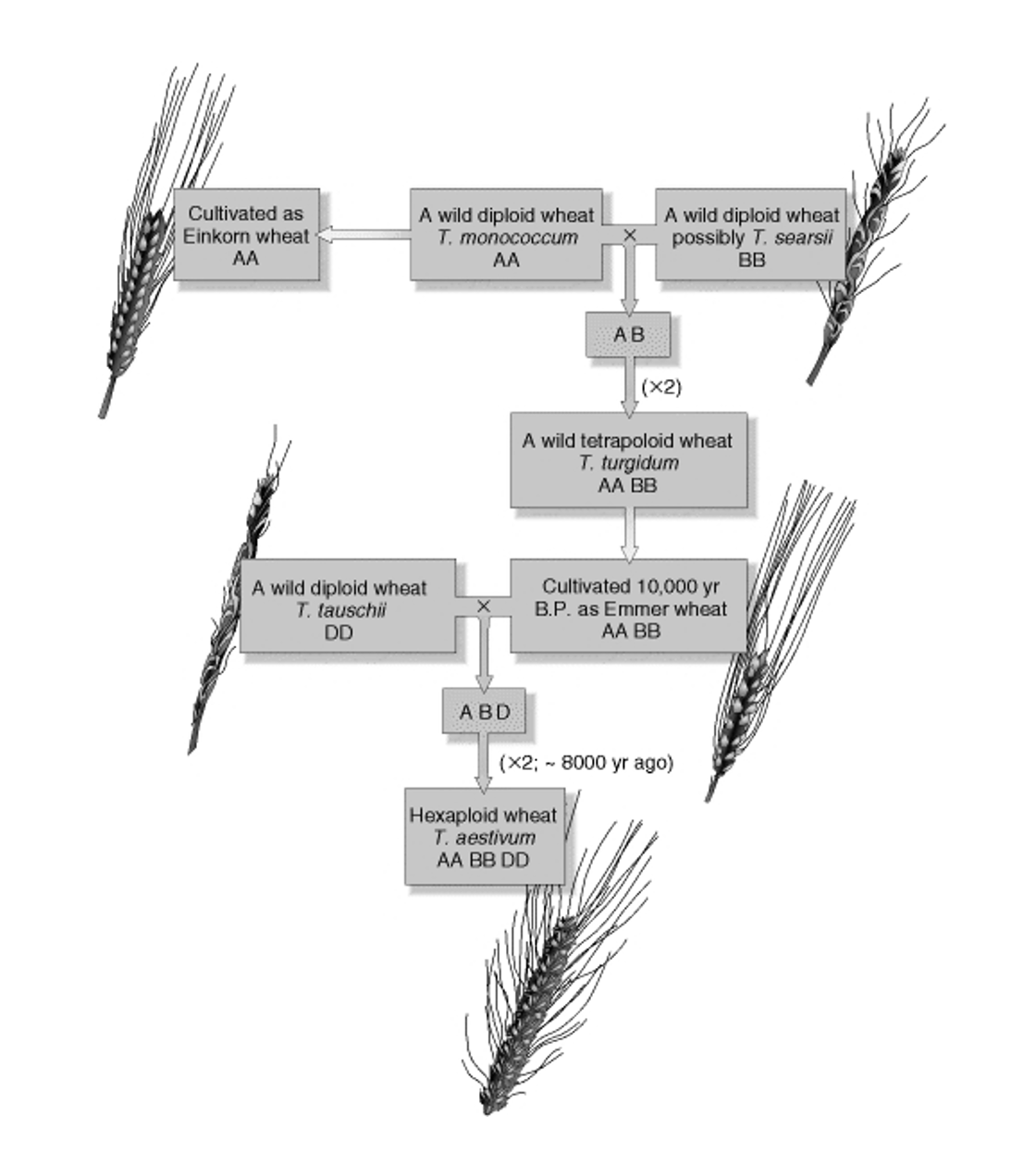
Now have re-synthesised hexaploidy, what to do with is?
cross with modern varieties
get the benefits of introgression
Limitations of this method?
need a good understanding of evo history of the polyploid event
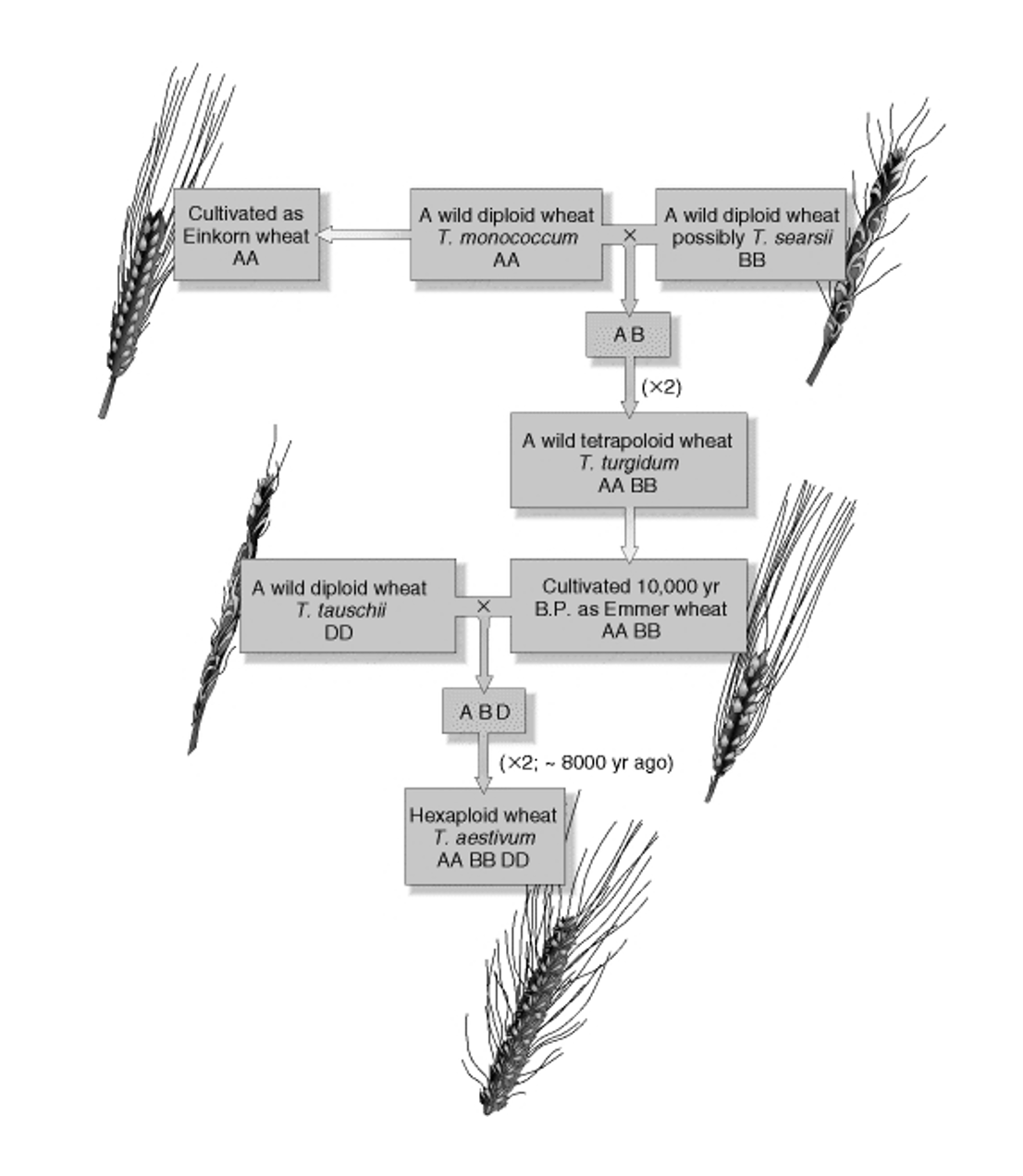
Issue with having only 4 crops accounting for 2/3 of calories
lack of resilience in systems
(increased risk in catastrophic interruption of food supply)
Vast majority of modern breeding and domestication efforsta re likewise focussed on relatively few species
→ excluded domestication of other crops
What are orphan crops?
diverse set of minor crops
locally or regionally important
BUT
not commercially traded
Importance of orphan crops where they are grown
very important
provide income for the poorest farmers
serve staples in local diet
Due to orphan crops having less domestication they are…
less productive
untenable at larger agricultural scales
benefit less from basic research
Could orphan crops help food security?
potential speedy domestication?
rapidly speed up crop improvement
decrease food security challenges
What is needed to help speed up domestication process
evo understanding of domestication syndrome
which traits are important and in whcih order?
evo insights into underlying similarity and differences in genetic changes that underpin convergent domestication traits
e.g the shared transciptional changes etc
e.g shattering and stickiness→ same genes underlie them but different crops= homolgous gene
Therefore, if you want to try take an evo informed approach to inducing domestication
good to start finding the gene for a trait in one crop and finding same (homoglous) gene in the other crop
→ may have different function but still useful
→ Candidate gene approach
How to rapidly domesticate orphan crops, suggested things?
classical breeding sped up with genomic technologies
BUT→ still lengthly and tedius due to random recombination and undirected mutagenesis
Introgression of beneficial alleles?
BUT→ can get unwanted genetic material linked to genes
have to do lots of backcrossing to get rid
CRISPR/Cas→ does work!! gene editing
How does CRISPR/Cas help rapid orphan domestication
Apply candidate gene approach
Find useful homologous target gene in new or orphan crop→ with no domestication
target creation of mutations e.g sall deletions
OVERALL→ can take progenitor crops→ and convert to domesticated crop species
in a few years
Example of CRISPR/Cas crop sped domestication→ Tomato
Took wild progenitor of tomato
Disrupted size genes known from studies that were known to→ domestication
Compared to wild type
Results:
→ increased bushiness of plant
→ 3x fruit size
→ 10 x fold number of single experiment
→ x5 nutrition
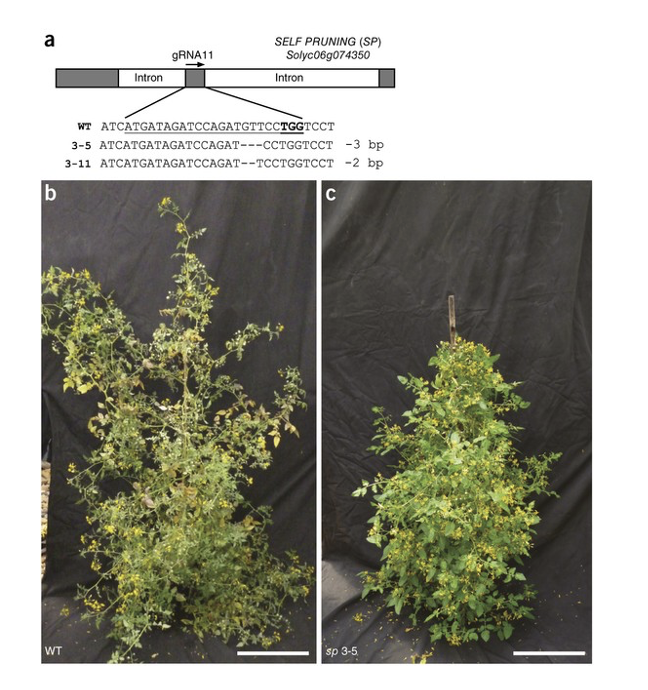
Nitrogen fixation in our 4 ceral crops
does not happen
need to make this happen!
So less reliant on fertilisers
Origin of nitrogen fixation?
molecularly from one origin
→ suggests that engineering nitrogen fixation is diffisult
BUT
origin of nodulation dates back later→ so may not need nodules for nitrogen fixation
→ May be able to artificially do this in plant then?
→ Nodule formation has happened as many as 9 times!
must be convergent mechanisms→ available for de novo genetic engineering!!
Nodulation vs Arbuscualr mycorrhizal symbiosis signalling
Share similar signalling pathways
cytokinins and auxin etc
This means:
provide encouraginment for engineering nitrogen-fixing monocots as orthoglous components of the machinery, should already be present in functioning cereal crops
→ Therefore should be easy!
Overall things that will help decrease food insecurity
Increase genetic diversity→ introgression with wild
Polyploidy re-synthesising
Domesticate orphan crops
Engineering nitrogen fixation in cereal crops
Summary of stuff
Food security→aspects
Problem→ low gene diversity in 4 crops
Solution:
Introgression with wild crops
Issues: polyploidy, wild crops endangered, genes that we dont want
Rapid domestication of orphan crops
Issues: finding genes to dom, genes dont want→ CRISPR/cas9
Nitrogen fixation artifically engineer